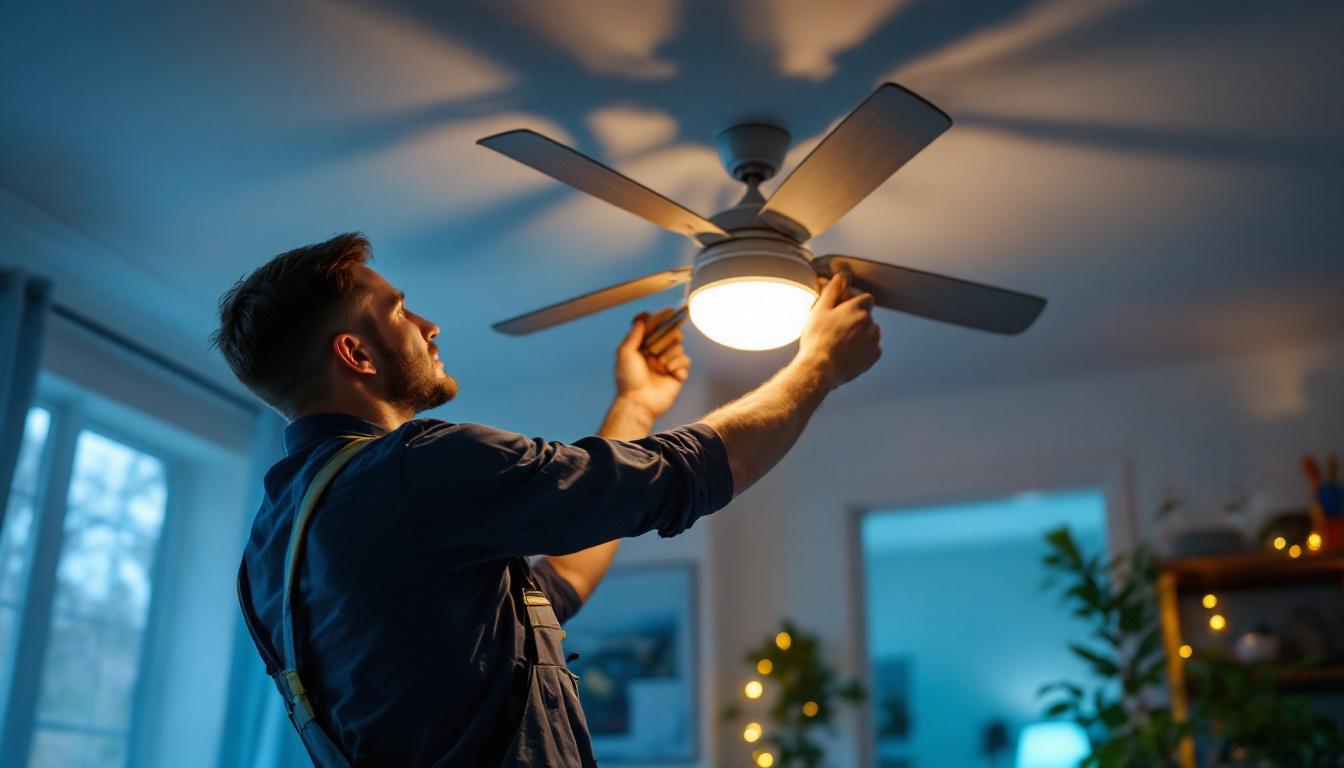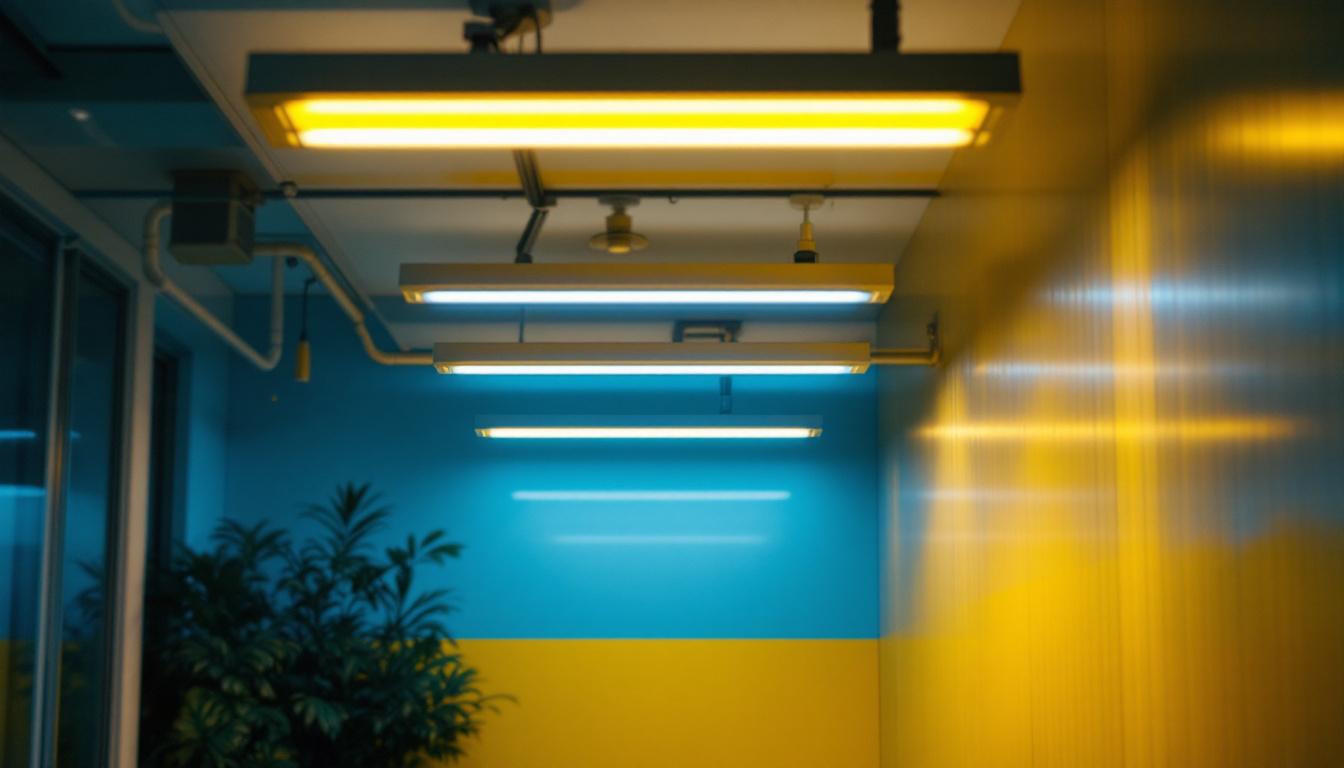
In the realm of modern lighting solutions, LED (Light Emitting Diode) and fluorescent lights have emerged as two of the most popular choices. Each type of lighting has its unique characteristics, advantages, and applications. For lighting contractors, understanding these differences is crucial not only for effective installation but also for providing clients with informed recommendations.
LED lights are known for their energy efficiency, longevity, and versatility. They convert a higher percentage of energy into light compared to traditional incandescent bulbs, resulting in lower energy bills and a reduced carbon footprint. Additionally, LEDs have a lifespan that can exceed 25,000 hours, making them a cost-effective choice in the long run.
Moreover, LEDs are available in various colors and can be easily dimmed, allowing for greater control over the ambiance of a space. This adaptability makes them suitable for a wide range of applications, from residential to commercial and industrial settings. Their compact size also enables innovative designs, such as recessed lighting and decorative fixtures, which can enhance the aesthetic appeal of any environment.
Furthermore, the rapid advancement in LED technology has led to the development of smart lighting solutions that can be controlled via smartphones or voice-activated devices. This integration of technology not only adds convenience but also allows users to customize lighting schedules and settings, further optimizing energy consumption. As a result, LEDs are increasingly becoming the preferred choice for eco-conscious consumers and businesses looking to modernize their lighting systems.
Fluorescent lights, on the other hand, have been a staple in commercial lighting for decades. They are known for their ability to produce bright, white light, which is ideal for illuminating large areas. Fluorescent tubes are often used in offices, schools, and retail environments due to their efficiency and cost-effectiveness.
While fluorescent lights are generally less energy-efficient than LEDs, they still offer significant advantages over incandescent bulbs. Their lifespan typically ranges from 7,000 to 15,000 hours, making them a reliable choice for many applications. However, they do contain small amounts of mercury, which requires careful disposal and handling. This environmental consideration has prompted many businesses to explore alternative lighting solutions that minimize hazardous waste.
In addition to their practical applications, fluorescent lights can also be found in various forms, including compact fluorescent lamps (CFLs) that are designed to replace traditional incandescent bulbs in standard fixtures. These CFLs provide a similar light output while using significantly less energy. Moreover, advancements in fluorescent technology have led to the development of high-efficiency models that offer improved performance and longer lifespans, making them an appealing option for budget-conscious consumers who still seek energy savings.
Training your team on the nuances of LED and fluorescent lighting is essential for ensuring that they can effectively communicate the benefits and drawbacks of each option to clients. A well-informed team can help clients make decisions that align with their needs and budget, ultimately leading to higher customer satisfaction.
To train your team effectively, consider developing a comprehensive training program that covers the fundamentals of both LED and fluorescent lighting. This program should include theoretical knowledge as well as practical applications. Start with the basics of how each type of lighting works, including the technology behind LEDs and fluorescents.
Incorporate hands-on training sessions where team members can work with different types of fixtures and bulbs. This practical experience will help them understand the installation processes, maintenance requirements, and troubleshooting techniques for both lighting types.
Visual aids can significantly enhance the learning experience. Utilize diagrams, videos, and interactive presentations to illustrate key concepts. For instance, showing the differences in energy consumption and light output between LEDs and fluorescents can provide a clear visual representation of their advantages and disadvantages.
Additionally, consider providing access to online resources, such as webinars and articles, that delve deeper into the latest advancements in lighting technology. Encouraging team members to stay updated on industry trends will foster a culture of continuous learning within your organization.
Once your team is trained on the fundamentals of LED and fluorescent lighting, it is essential to focus on key considerations during the installation process. Proper installation can significantly impact the performance and longevity of the lighting systems.
One of the first considerations during installation is ensuring that the fixtures used are compatible with the chosen lighting technology. For instance, not all fluorescent fixtures can accommodate LED bulbs, and vice versa. Educating your team on fixture compatibility will help prevent costly mistakes and ensure optimal performance.
Additionally, understanding the different types of fixtures available for both LED and fluorescent lights will allow your team to make informed recommendations to clients based on their specific needs. This knowledge is particularly important when working on retrofitting projects where existing fixtures may need to be modified or replaced.
Electrical requirements can vary significantly between LED and fluorescent lighting systems. LEDs typically operate at lower voltages and can be powered directly from standard electrical circuits. In contrast, fluorescent lights often require ballasts to regulate the current flowing through the tubes.
Training your team to assess the electrical requirements of different lighting systems will ensure that installations are safe and compliant with local codes. This knowledge will also help them troubleshoot any issues that may arise during or after installation.
Proper maintenance is vital for ensuring the longevity and performance of both LED and fluorescent lighting systems. Your team should be well-versed in maintenance practices and troubleshooting techniques to address common issues that may arise.
Routine maintenance practices for LED and fluorescent lights can vary, but both require regular inspections to ensure optimal performance. For fluorescent lights, this may include checking for flickering or dimming, which can indicate a failing ballast or tube. In contrast, LED lights may require checking for color temperature consistency and ensuring that fixtures are clean and free of obstructions.
Encouraging your team to establish a maintenance schedule for clients can help prolong the life of the lighting systems and enhance customer satisfaction. This proactive approach can also lead to repeat business and referrals.
Training your team to troubleshoot common issues is essential for minimizing downtime and ensuring client satisfaction. For fluorescent lights, common problems may include flickering, buzzing, or complete failure. Understanding the potential causes of these issues, such as faulty ballasts or poor connections, will enable your team to diagnose and resolve problems quickly.
Similarly, with LED lights, issues such as dimming or color shifts can occur. Educating your team on the potential causes, such as overheating or driver failure, will empower them to address these challenges effectively.
Effective communication with clients is a critical aspect of being a successful lighting contractor. Educating clients about the benefits and considerations of both LED and fluorescent lighting can help them make informed decisions that align with their needs.
When discussing lighting options with clients, it is essential to provide clear comparisons between LED and fluorescent lights. Highlight the energy efficiency, lifespan, and maintenance requirements of each option, as well as their respective costs. This information will help clients weigh the pros and cons and make a decision that best fits their budget and requirements.
Using visual aids, such as charts or graphs, can be particularly effective in conveying this information. Clients are more likely to understand and appreciate the differences when presented in a clear and visually appealing manner.
Every client has unique needs and preferences, and offering customized lighting solutions can set your business apart from competitors. Take the time to assess each client’s space and lighting requirements, and provide tailored recommendations based on their specific circumstances.
For instance, in a commercial setting, energy efficiency may be a top priority, making LED lights a more suitable option. In contrast, a client looking for a cost-effective solution for a temporary installation may prefer fluorescent lights. By offering customized solutions, you demonstrate your commitment to meeting client needs and building long-term relationships.
The lighting industry is continually evolving, with new technologies and innovations emerging regularly. Staying updated with these trends is essential for lighting contractors to remain competitive and provide clients with the best solutions available.
Attending industry events, trade shows, and conferences can provide valuable insights into the latest advancements in lighting technology. These events often feature workshops, seminars, and networking opportunities that can enhance your team’s knowledge and skills.
Encouraging your team to participate in these events can foster a culture of learning and innovation within your organization. It also allows them to connect with industry experts and peers, sharing experiences and best practices that can benefit your business.
Online communities and forums dedicated to lighting professionals can be excellent resources for staying informed about industry trends. Engaging in discussions, sharing experiences, and asking questions can provide valuable insights and help your team stay ahead of the curve.
Additionally, subscribing to industry publications and following relevant blogs can keep your team updated on the latest news, product releases, and technological advancements. This ongoing education will empower your team to make informed decisions and recommendations to clients.
Training your team in LED and fluorescent lighting is essential for ensuring that they can effectively serve clients and provide high-quality installations. By developing a comprehensive training program, focusing on installation considerations, and emphasizing maintenance and troubleshooting, your team will be well-equipped to handle a variety of lighting projects.
Moreover, effective communication with clients and staying updated with industry trends will further enhance your team’s capabilities and reputation as lighting professionals. In a rapidly evolving industry, continuous learning and adaptation are key to success.
By investing in your team’s knowledge and skills, you not only improve your service offerings but also contribute to a more sustainable and energy-efficient future in lighting.
Ready to elevate your lighting game? Look no further than LumenWholesale for all your LED and fluorescent lighting needs. Our commitment to quality and affordability ensures that you can provide your clients with the best lighting solutions without breaking the bank. With our extensive selection of spec-grade products and the convenience of free shipping on bulk orders, you’re guaranteed to find the perfect lighting fixtures for any project. Don’t miss out on the value that only LumenWholesale can offer. Wholesale Lighting at the Best Value is just a click away. Equip your team with the best, and watch your lighting installations shine brighter than ever.

Discover how lighting for above cabinets is revolutionizing the lighting industry by enhancing aesthetics and functionality in modern interiors.

Discover expert tips and strategies for lighting contractors to master outdoor post lantern installations.

Discover everything lighting contractors need to know about ceiling fan outlets in this comprehensive guide.

Discover the benefits of fluorescent fixtures in energy-efficient lighting.